15 Dog Breeds That People Mix Up All the Time
When two dogs look nearly identical, it’s easy to blur the lines, and that’s okay; even seasoned dog lovers get it wrong sometimes. Blame it on similar coats, matching sizes, or just good old canine charisma. This article lists 15 dog breed pairs people mix up all the time, and how to tell them apart.
Alaskan Malamute vs. Siberian Husky
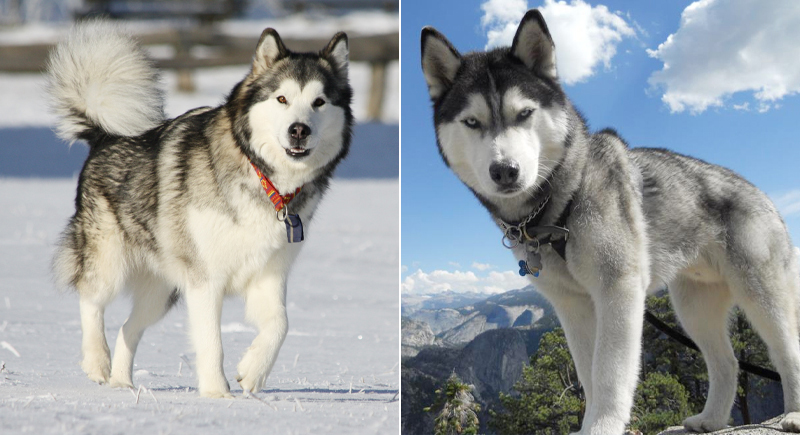
Credit: Wikimedia Commons
Both come with icy eyes, thick coats, and a love for the snow, but Malamutes are the heavy-haulers. They’re bigger, stronger, and bred for dragging freight. Huskies, by contrast, were built for speed and mischief. You’ll usually spot a Husky out-talking everyone in the room.
Samoyed vs. American Eskimo Dog (Standard)
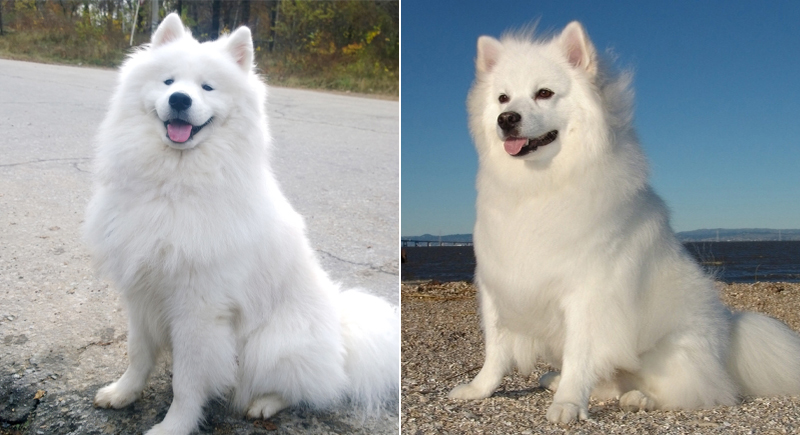
Credit: Wikimedia Commons / Getty Images
These fluffy white dogs both have big grins and snowy coats, but there are clues. Samoyeds are larger and have a working-dog background in Siberia. American Eskimo Dogs, originally from Germany, tend to be smaller and have varied personalities. Samoyeds are generally quieter, while Eskies are more bark-prone and famously trainable.
Coton de Tulear vs. Maltese

Credit: Wikimedia Commons
Coton has a sturdier build as compared to Maltese. Maltese dogs are daintier, usually under 7 pounds, with long hair that drapes down. The Maltese are more ancient, while the Coton are from Madagascar and are known for bonding hard with one favorite human.
Bearded Collie vs. Old English Sheepdog
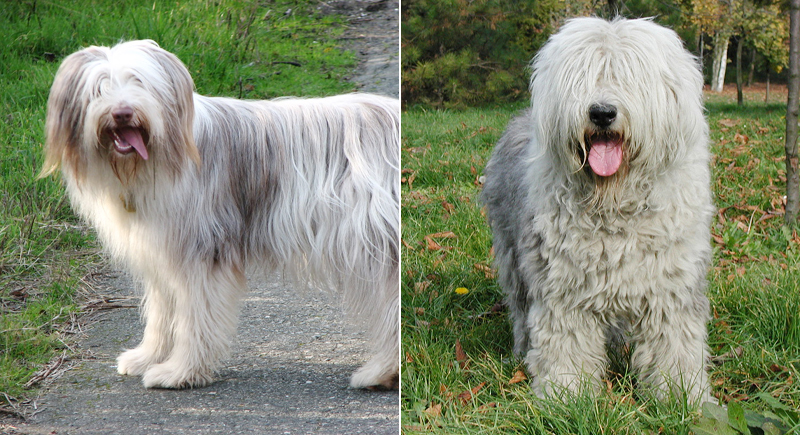
Credit: flickr / Wikimedia Commons
These shaggy herders could pass for cousins, but coat texture tells the story. The Beardie’s coat hangs long and straight, and they’re light on their feet. Old English Sheepdogs are all bulk and bounce, with coats that fluff out like they were styled with a blow dryer.
Shiba Inu vs. Akita Inu

Credit: Wikimedia Commons
Shibas look like mini Akitas, but they don’t act like them. A full-grown Shiba usually stays under 25 pounds. Akitas, meanwhile, can top 100. Shibas are quick, reactive, and not shy about their feelings. Akitas stay quiet, keep to themselves, and watch the room before making a move. Both breeds have curled tails and sharp, alert features, but the energy they bring into a home is totally different.
Lhasa Apso vs. Shih Tzu

Credit: Wikimedia Commons
They both have thick hair and ancient lineage, but Lhasas guarded Tibetan monasteries, while Shih Tzus were bred to sit on royal laps. Lhasas are longer-bodied and more reserved. Shih Tzus tend to be shorter, sweeter, and very into anyone offering snacks or belly rubs.
Belgian Malinois vs. German Shepherd
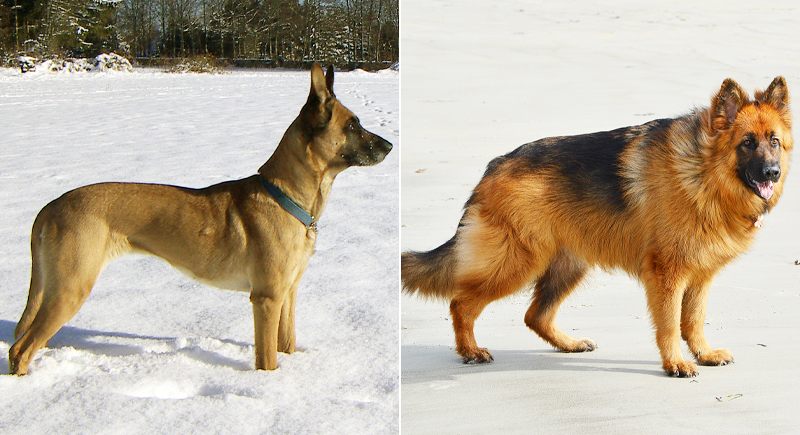
Credit: Wikimedia Commons
Belgian Malinois are built for nonstop action. They are leaner, faster, and wired to work. They don’t sit still, and they don’t burn out easily. German Shepherds have a steadier presence, more muscle, and a calmer rhythm, especially around family. Both breeds serve on police forces and in military roles, but their pacing and drive aren’t quite the same.
Norfolk Terrier vs. Norwich Terrier

Credit: iStockphoto
If you want to find out which tiny terrier is which, just look up at their ears. Norwich ears point up like little radar dishes, and Norfolk ears flop forward. Except for this, they are practically identical. Both are fearless, wiry-coated, and once hunted rats like it was a full-time job.
Vizsla vs. Rhodesian Ridgeback
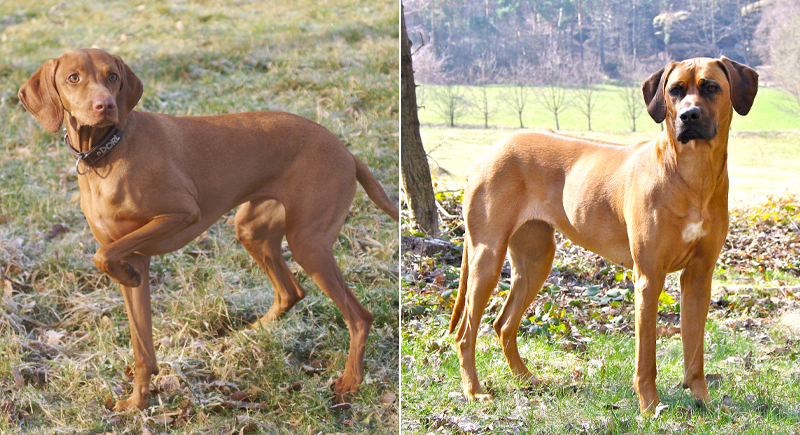
Credit: Wikimedia Commons
They’re both lean, athletic, and built to move, but that ridge down the Rhodesian’s back sets it apart. Vizslas don’t have it, and they don’t need it. What they bring instead is constant attachment. They like to be underfoot, in your lap, or right behind you. Ridgebacks are more hands-off. They were bred to track lions, and that self-sufficiency still shows.
Boston Terrier vs. French Bulldog

Credit: Wikimedia Commons
They share a similar size and those big round eyes, but Boston Terriers sport tuxedo-like markings and longer legs. French Bulldogs are more compact and muscular, with signature bat-like ears. Boston Terriers breathe easier and tend to be more energetic.
Whippet vs. Italian Greyhound

Credit: Wikimedia Commons
Speed is in their DNA, but these two don’t come from the same litter. Whippets are mid-sized sprinters bred for the racetrack. Italian Greyhounds are smaller, daintier, and famously fragile. They’d rather be on the couch than chasing hares.
Puli vs. Komondor
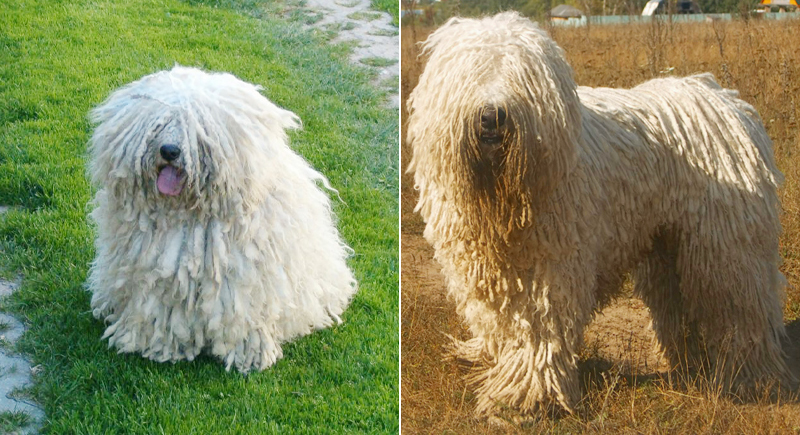
Credit: Wikimedia Commons
Pulis are smaller, usually around 30 to 35 pounds, and move fast. They’re herding dogs with tight turns and quick feet. Komondors are much larger, often over 100 pounds, and were bred to guard livestock. Both have naturally corded coats, but that’s where the similarity ends.
Golden Retriever vs. Labrador Retriever
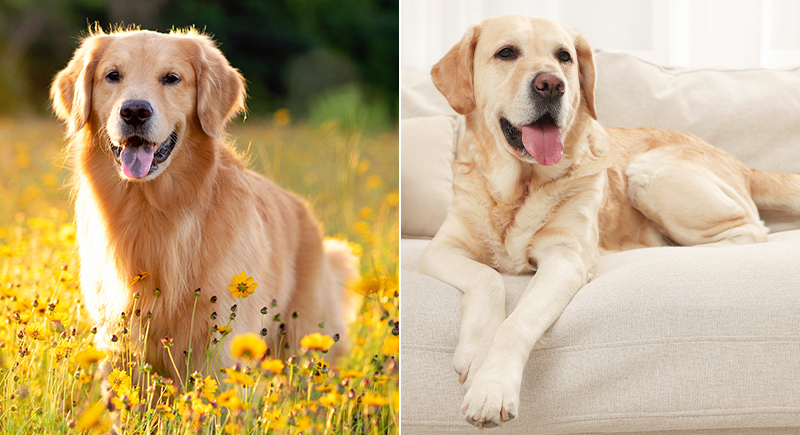
Credit: iStockphoto
They’re both family favorites and share a sunny temperament, but Goldens have longer, wavy coats and plumed tails. Labs are stockier, with a shorter, water-resistant coat and an otter-like tail. Goldens may be more sensitive and eager to please, while Labs lean goofy and high-energy.
Scottish Deerhound vs. Irish Wolfhound

Credit: Wikimedia Commons / flickr
Both are lanky giants with wiry coats and ancient hunting roots, but Irish Wolfhounds are bigger and bulkier. Wolfhounds can weigh over 120 pounds, while Deerhounds are slightly lighter and narrower. Their temperaments are surprisingly gentle. Irish Wolfhounds were bred to take down wolves; Scottish Deerhounds focused on deer.
Bernese Mountain Dog vs. Greater Swiss Mountain Dog

Credit: Wikimedia Commons
These Swiss cousins sport the same tricolor coats, but Bernese dogs are fluffier with longer hair. Swissies are more muscular, often heavier, and have a short, dense coat. Berners were bred for draft work and companionship, while Swissies were more focused on pulling carts and guarding.